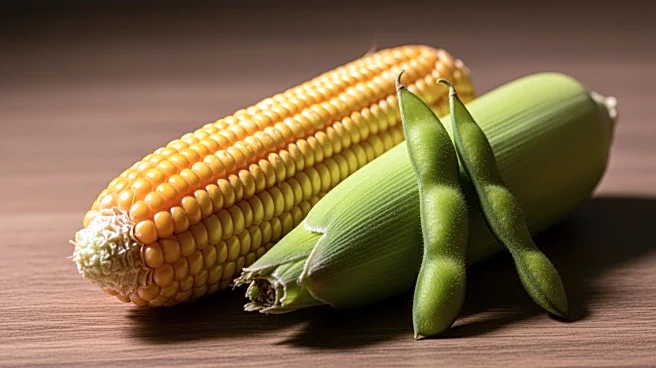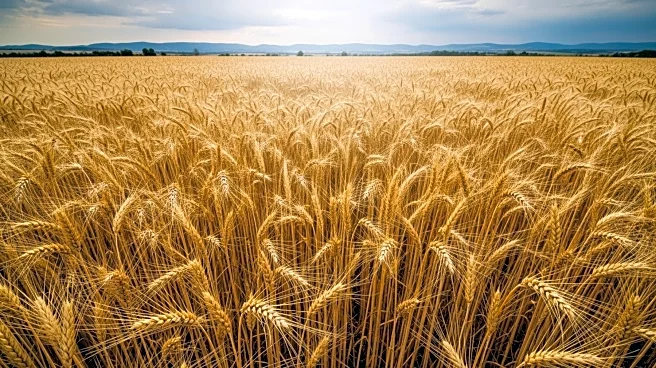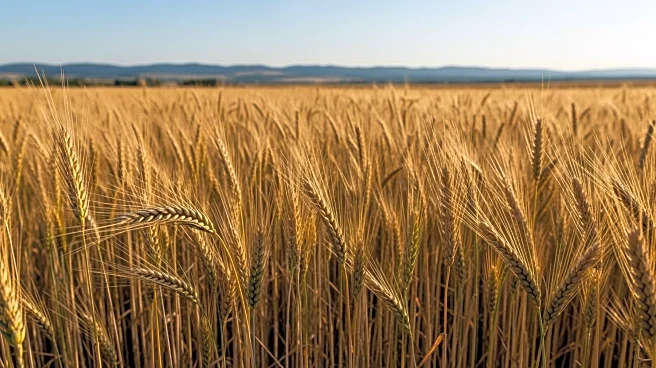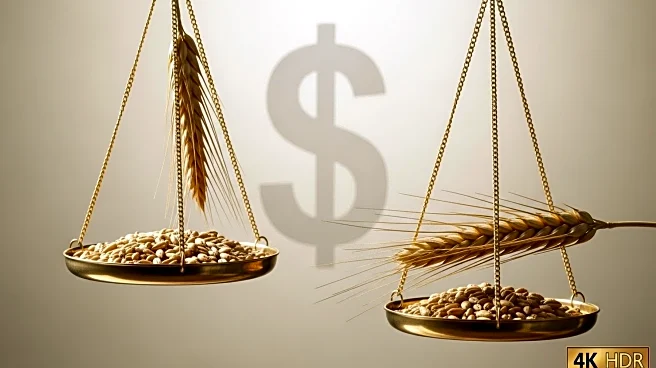What's Happening?
Grain and oilseed prices have been experiencing a period of low volatility, described as 'watching paint dry,' due to a combination of factors including harvest pressure, government shutdown uncertainty, trade wars, and ample supplies. December corn futures
have remained near $4.20, with soybeans trading within a $1 range over the past year, and wheat futures showing a gradual decline. These stable prices are supported by variable yield results, suggesting that recent USDA yield estimates may be overly optimistic. Despite historically low prices, rising input costs make corn, soybeans, and wheat attractive to end users.
Why It's Important?
The current low prices in grain markets are significant as they often precede a price recovery. As demand builds, the need to increase supplies can lead to higher prices. This period of stability offers end users an opportunity to secure long-term supplies at or below production costs, potentially mitigating future price appreciation risks. For producers, the challenge is to manage low prices effectively to avoid exacerbating financial difficulties. Strategies such as negotiating basis contracts and selling into carrying charges can help reduce market risk exposure.
What's Next?
Market participants are advised to prepare for potential price movements by planning and executing strategies for current and future grain production. This includes calculating risks, considering various strategies, and making informed decisions rather than reacting emotionally to market dynamics. Regularly revisiting these strategies can help adapt to changing market conditions. The historical pattern suggests that prolonged sideways movement in prices often leads to significant breakouts, making preparation crucial.
Beyond the Headlines
The ethical and strategic considerations for producers and end users involve balancing immediate financial pressures with long-term market opportunities. The ability to anticipate and respond to market changes can significantly impact the sustainability and profitability of agricultural operations. This situation underscores the importance of strategic planning and professional guidance in navigating complex market environments.













